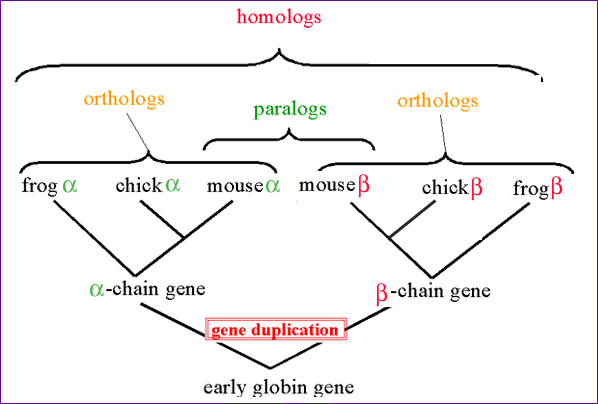

Homology. Genes derived by descent from a common ancestor that carry our similar functions are homologs. Beyond the broad terms of homolog and homology, there are two more specific terms for the relationships of genes that duplicated in an ancestral species.
As shown in the figure above, consider the duplication of an early globin gene to make α-globin and β-globin in a species ancestral to amphibians, birds, and mammals.
The α-globin genes of frog, chick, and mouse are orthologs, as are the β-globin genes of frog, chick, and mouse. Orthologs are comparable members of a gene family in related organisms.
The α-globin gene of the mouse is the paralog of the β-globin gene of the mouse. Similarly, α-globin and β-globin are paralogs in chick and frog. In general, the term paralog refers to related genes in a particular organism derived from gene duplication in an ancestral species.
Orthologs and paralogs are both types of homologs, which is the more general term.